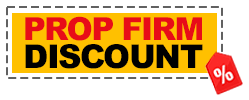Prop Firm Comparison: Where They Truly Differ
The table below lists each firm’s hard numbers. This article highlights the differences that actually change your trading experience—so you can spot which firm fits your strategy in seconds.

QT Funded
QT Funded (company name Quant Tekel Ltd), founded in 2023, is a UK-based proprietary trading firm offering retail traders access to up to $2,000,000 in capital with up to 90% profit split. It operates three main programs: QT Instant (instant funding, no evaluation), QT Prime (2-step or 3-step evaluation), and QT Power (simplified 2-step evaluation). Trading conditions feature no time limits, solid risk management rules, and allowance for news trading and approved Expert Advisors (EAs). Accounts start as low as $26 and scale with evaluation complexity, platform choice (MT5, cTrader, TradeLocker), and regional currency options (USD, GBP, EUR). The firm emphasizes fast, transparent payouts and provides comprehensive trader support including 24/7 live chat and Discord channels. It has a geographically diverse trader base, with significant presence in Asia, Europe, Africa, and the Americas.

Atmos Funded
Atmos Funded is a broker-backed firm powered by Taurex, headquartered in Dubai, offering trader-friendly evaluation models with no time limits, flexible scaling, and up to 90% profit split. Traders benefit from a clear, predictable daily drawdown rule with daily resets, multi-asset trading on popular platforms, and fast bi-weekly payouts with multiple withdrawal options.
Key Differences
Note: Information is for reference only; please visit the firm’s official website for the most accurate and up-to-date details.
Pros & Cons
QT Funded — Pros
- Profit split up to 90%, competitive with top-tier firms.
- No evaluation time limit with flexible pacing.
- Multiple tracks including 1-step and 2-step challenges.
- Fast payouts with frequent cycles.
- Scaling program available to expand allocation.
- Supports mainstream platforms and broad instruments across FX, indices, commodities, metals, stocks, and crypto.
QT Funded — Cons
- Minimum trading-days requirements may apply on some programs.
- Daily and overall drawdown limits are strictly enforced.
- News-trading restrictions may apply depending on phase/instrument.
- Subject to regional restrictions; not all countries are eligible.
Atmos Funded — Pros
- Offers both 1-phase (≈10% target) and 2-phase (≈8% then ≈5%) challenges.
- Profit split up to 90% for strong performers.
- No time limit on either track.
- Allows EAs and news trading during evaluation (some restrictions may apply after funding).
- Short payout cycle (every ~14 days) and multiple withdrawal methods; optional bonus for routing profits to a partner live account.
Atmos Funded — Cons
- No fee refund after passing in most cases.
- The 1-phase track has tight risk: ~3% daily and ~6% trailing/total drawdown, which can be unforgiving.
- News trading restricted on funded (short blackout window before/after major news).
- No weekend holding; positions must be closed before the weekend.
- Lower leverage (e.g., ~1:30 FX; ~1:5–1:10 on other instruments).
- Public scaling details are not very clear (claims of periodic increases but limited transparency on upper caps).
Model & Time Limits: Pace vs. Pressure
- Instant / One-step models favor traders who want quick funding and minimal phases—usually higher fees but faster start.
- Two-phase models trim upfront cost and add verification, but Time Limits can add pressure if you need more trades to realize edge.
- No time limit or lenient windows reduce forced trades; tight windows reward fast, high-activity approaches.
Risk Rules: DD (Daily/Overall) & Max Loss
- Stricter Daily DD = tougher for scalpers during volatility; looser Daily DD = more room for heat intraday.
- Higher Overall DD / Max Loss cushions swing holds; lower buffers suit disciplined, tight-stop systems.
- News Trading allowed favors event traders; restricted news reduces gap risk but limits catalysts.
Payout & Split: Cash Flow vs. Percentage
- Earlier first payout (7–14 days) + frequent cycles = smoother cash flow—even if the split is slightly lower.
- Higher splits shine only if timing, caps, and fees don’t slow you down.
- When two firms tie on split, choose the one with fewer payout frictions (methods, fees, thresholds).
Scaling / Max Allocation: Real Path vs. Big Number
- Clear, incremental scaling (defined profit targets & min days) beats a flashy Max Allocation you’ll rarely reach.
- Shorter milestones reward consistent returns; longer gates suit patient compounding.
Platforms & Tradable Assets: Execution Fit
- Multiple platforms (MT4/MT5/cTrader/TradingView) = flexibility. Single-platform firms can be fine if execution is stable.
- Broader asset lists (indices, FX, commodities, crypto, stocks) unlock more setups; narrow menus force concentration risk.
Commissions: Quiet Edge Eroder
- Lower per-lot/contract commissions preserve edge for active traders; higher costs can negate a better split.
- When two firms feel identical, pick the cheaper fill—it compounds every session.
Restricted Countries: Eligibility & Payout Practicalities
- Check Restricted Countries first—eligibility, KYC friction, and payout rails differ by region.
- If your country is borderline, choose firms with clear guidance and multiple withdrawal methods.
Pros & Cons: How to Read Them Quickly
- Generous drawdown but stricter news → great for non-event strategies.
- Fast payouts but higher commissions → suits low-turnover setups.
- Big scaling but tight time limits → favors high-activity traders.
Make the Call in 5 Checks
- Model & Time — need speed (instant/1-step) or flexibility (no/lenient limits)?
- Risk Rules — DD & Max Loss align with your drawdown profile?
- Payout Mechanics — first payout timing & cycle fit your cash flow?
- Scaling Reality — milestones you can actually hit?
- Costs & Execution — commissions + platform stability ok for your style?
Then use the table’s Discount link, check Trustpilot sentiment, and Visit website for fine print.





